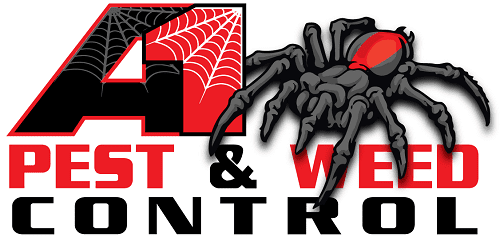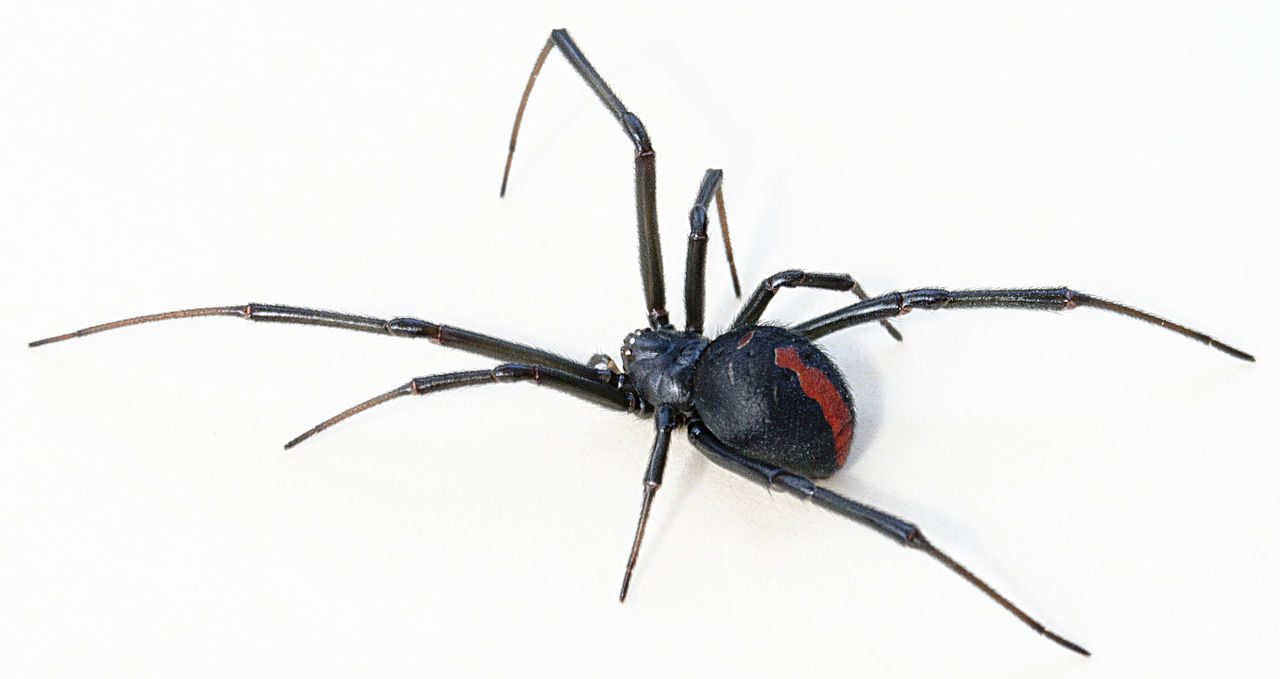Redback Spider: Australia’s Venomous Arachnid
Redback spiders are species native to Australia and have become infamous for their distinctive black and red markings. They inhabit many areas across the continent, from urban centres to rural locations. This article will provide an overview of the facts about redback spiders in Australia and examine the risks posed by these creatures.
The first section of this article will discuss the scientific classification and appearance of redback spiders found in Australia. It will examine their physical characteristics and provide information on how they can be identified.
Secondly, it outlines where these creatures live within Australia, exploring which habitats they thrive in and what sort of climates they favour. Lastly, it looks at potential risks associated with coming into contact with them, such as how dangerous their bites may be if encountered unexpectedly.
This comprehensive exploration provides readers with a detailed insight into one of Australia’s most recognisable arachnids – the Redback Spider – allowing them to gain knowledge essential for understanding its existence in our beautiful country. With this newfound knowledge comes a sense of belonging, both to nature itself and those around us who share our experiences when discussing the presence of Redbacks in our lives.
Classification
Scientific Species Name: Latrodectus hasseltii Genus: Latrodectus Class: Arachnida Family: Theridiidae Order: Araneae Subphylum: Chelicerata Phylum: Arthropoda Kingdom: Animalia
- The Redback spider is a species of venomous spider endemic to Australia.
- It belongs to the Latrodectus genus, which includes other species of widow spiders found worldwide.
- Redback spiders are classified under the Arachnida class, which includes spiders, scorpions, ticks, and mites.
- They are members of the Theridiidae family, commonly known as the cobweb spider family.
- The Order Araneae includes all spiders, and the Subphylum Chelicerata includes arachnids, horseshoe crabs, and sea spiders.
- Redback spiders belong to the Phylum Arthropoda, which comprises joint-legged invertebrates, including insects, arachnids, and crustaceans.
- The Redback spider is a member of the Animalia Kingdom, which includes all animals on Earth.
10 Interesting Facts About The Australian Red Back Spider
- Redback spiders are native to Australia and are commonly found throughout the country.
- The venom of the Redback spider is highly toxic and potentially lethal to humans, especially children and the elderly.
- Only the female Redback spider is dangerous to humans, as males are much smaller and do not possess venom glands.
- The Redback spider is related to the Black Widow spider, found in North America, and they share many physical and behavioural traits.
- Redback spiders are known for their distinctive red stripe on their backs, which gives them their name.
- The female Redback spider is known for its cannibalistic behaviour and will often eat the male after mating.
- Redback spiders are nocturnal and build webs in the dark, sheltered areas such as sheds, garages, and outdoor furniture.
- The Redback spider is one of the most dangerous spiders in the world and is responsible for numerous deaths in Australia.
- Despite their dangerous reputation, Redback spiders are an important part of the ecosystem, as they help control insect populations.
- Redback spider antivenom is widely available in Australia, and deaths from Redback spider bites are rare if medical attention is sought promptly.
Identification
The redback spider (Latrodectus hasselti) is one of Australia’s most commonly encountered spiders. It has a prominent black body with a distinctive red stripe running down its back, giving it its common name. The female spider grows to be about 1 cm long, while males are much smaller at around 2-3 mm in size. Redbacks can also be identified by their large and globular abdomen that tapers towards the rear end and their thick legs, which appear almost furry due to fine hairs.
Redbacks have poor eyesight but have an acute sense of touch through their leg bristles and other tactile receptors near or on their mouthparts. They typically inhabit warm, dry areas such as woodpiles, sheds and outhouses, where they spin their webs in sheltered locations close to ground level. These webs consist of sticky threads arranged vertically like spokes on a wheel with radial lines connecting them together. At night, these spiders will sit in the centre of their web, waiting for prey to come within range before quickly moving forward to pounce upon it.
Knowing how to identify redback spiders is important so that people know when they need to take extra precautions against being bitten by this dangerous species.
Habitat And Distribution
The redback spider is native to Australia and can be found across the continent. Its natural habitat consists of sheltered areas such as logs, rock crevices, buildings, sheds, toilets and other similar spaces. The species inhabits a wide range of environments in its native range, including urban environments, grasslands, woodlands and arid regions.
Redbacks are not limited to any particular habitat type or region in Australia; they have been recorded from every state and territory within the country.
In terms of the distribution map, redback spiders are mainly distributed throughout the southern half of Australia, with some occurrences further north than expected. Reports have also indicated that their population is increasing due to climate change, causing them to move into new habitats outside their traditional range. This highlights the need for people living in these affected areas to understand how to manage potential encounters with this venomous spider species safely.
Physiology And Behavior
The redback spider is a species native to Australia and can be found in every state except Tasmania. It belongs to the family Theridiidae, which contains over 2200 recognized species. Redbacks are notable for their distinctive black and red colouring on their abdomen and cephalothorax. They have an average body size of 8-10 mm, with females slightly larger than males.
To understand its behaviour, it is important to examine its physiology. The redback spider has four pairs of eyes arranged in two rows that help them detect movement from far distances as well as short distances.
Their legs contain spines called trichobothria which aid them in detecting vibrations on surfaces where they may come into contact with potential prey or predators.
They also have strong fangs used to capture prey quickly while injecting venom; this venom helps immobilize the prey before devouring it.
Finally, they possess powerful bodies that allow them to jump many times their own length when hunting or evading danger.
Redbacks typically spend most of their time near webs built using sticky silk threads spun by themselves or other spiders around garden vegetation, fences, buildings and even clothing lines – all areas populated by humans – making encounters between people and redback spiders relatively common occurrences in Australia.
Although capable hunters, these spiders prefer ambushing prey rather than actively searching for food since they conserve energy through this method, allowing them more time for reproduction.
In general, the redback’s movements tend to be slow but deliberate, emphasizing its highly adapted predatory nature in urban environments where food sources are abundant yet competition is high among arthropods vying for resources.
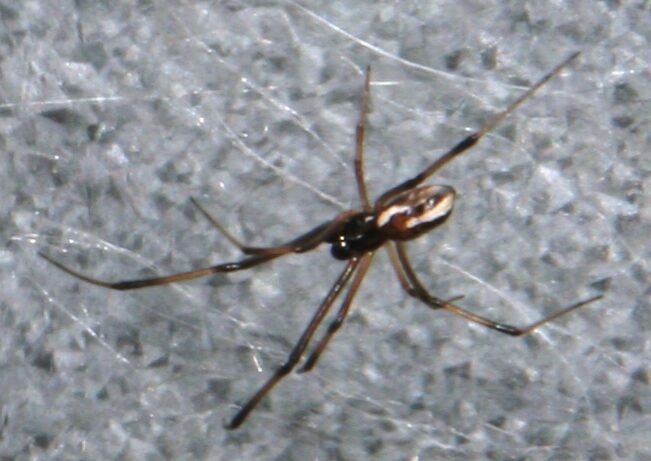
Overall, the anatomy and behaviours of the redback spider make it uniquely suited to thrive within both rural and urban habitats throughout Australia, making it one of the country’s most recognizable invertebrate species.
Its ability to adapt swiftly allows it to survive changing conditions, whether due to seasonal shifts, human interference or natural disasters. Such traits make this creature particularly successful at living amongst populations of Homo sapiens giving rise to numerous opportunities for interaction between man and beast.
Diet And Prey
The Redback Spider is a highly adaptive predator, with its diet being composed of many different prey items. Insects make up the majority of their diet, including flies, moths and beetles. In addition to insects, they can also consume small vertebrates such as frogs or lizards if available. As nocturnal hunters, the spiders will hunt during the night when food sources are abundant and easily accessible in their environment.
The spiders have been observed using a sit-and-wait hunting method, where they stay still and wait for potential prey to approach them while their surroundings camouflage them. Once an insect has approached close enough, the spider will use its fangs to inject venom into it, paralyzing it before consuming it whole within minutes of attacking.
Redback Spiders primarily feed on live prey but can scavenge dead animals if necessary. This may explain why reports of these spiders being found away from human dwellings exist because they expand their search for food sources outside of populated areas. This ability to adapt gives the species more chances at survival despite any changes that may occur in their habitat over time, both naturally and artificially made by humans.
Reproduction
The redback spider is an arachnid living in Australia with a distinctively resilient reproductive cycle. For most of its range, female fertility increases during the breeding season between spring and summer. This means females produce more eggs during this time than at any other point throughout the year. The male mating strategy includes searching for a receptive female before mating with her several times over multiple days.
After each mating session, the male will search for another receptacle female until it’s no longer viable due to exhaustion or food scarcity. When fertilized, these eggs will hatch into hundreds of small spiderlings, which disperse away from their parents shortly after hatching.
This process contributes to an impressive population increase rate; some studies have shown up to 10x growth rates across populations within just one year! Furthermore, as they reach maturity quickly – under two months when conditions are ideal – redback spiders can easily outnumber predators in areas where they’re present and cause problems for humans who may come into contact with them.
In addition, because they’re very tolerant of environmental changes, including temperature fluctuations and high humidity levels, redbacks can survive almost anywhere in Australia, given enough resources like prey or water sources.
Venom Toxicity
The redback spider, native to Australia and related to the black widow genus of spiders, is estimated to possess one of the most toxic venom types among arachnids. The main active ingredient in their venom consists of a protein-based neurotoxin known as latrotoxin. This toxin can cause serious harm if injected into humans or other animals through its action on ion channels and neurotransmitters.
The toxicity levels of redback spider venom depend mainly on how much has been injected but are typically higher than those found in many other species. In addition, it has been noted that female spiders tend to produce more potent venom than males. As such, bites from adult females should always be taken seriously due to their greater risk for complications.
If a redback spider bites someone, medical attention should be sought immediately as symptoms may become severe rapidly. Treatment usually involves administering antivenom, which binds with the toxins in the bloodstream and helps reduce their effects.
Painkillers may also be prescribed to manage any pain caused by the bite itself. It is important to keep an eye out for any signs of infection around the wound area, such as swelling or discolouration, and seek further medical advice if necessary.
Safety Precautions
When it comes to redback spider safety, the best way to prevent bites is through risk prevention. This includes making sure one’s environment is free of webs and hiding places where spiders can hide. In Australia, this means regularly checking around doors, windows, sheds, garages and other areas where spiders may be present.
Inspecting any items before carrying them is important as they may contain a hidden spider. If possible, protective clothing should also be worn when spending time outdoors in known high-risk environments such as woodpiles or compost heaps.
In addition to preventive measures, those living in Australia must be aware of how to react if bitten by a redback spider. Prompt medical treatment with an antivenom injection should be sought immediately after being bitten. Other treatments include cold application on the bite site and analgesic medications for pain relief.
The use of pressure bandaging or tourniquets should not be used due to their potential complications. Furthermore, obtaining professional help from pest control companies can reduce the risk of future interactions with redbacks. By following these guidelines and taking necessary precautions against bites, people in Australia can ensure that encounters with redback spiders remain safe and manageable experiences.
Treatment Of Bites
When it comes to the treatment of redback spider bites, there are a few different approaches. Medical treatment is typically recommended if the bite is severe and results in symptoms such as pain, swelling, or nausea. This type of medical treatment may include antivenom injections, antibiotics, steroids, or other medication, depending on the severity of the reaction. In addition to medical interventions, proper first aid can be provided by cleaning the wound with soap and water and elevating the bitten area if possible.
In cases where venom has been injected into the skin, but no serious symptoms have developed, some sources recommend applying ice packs for 10-15 minutes every hour to reduce inflammation and pain relief medications such as ibuprofen or acetaminophen to help manage any discomfort that may arise from a redback spider bite.
While these treatments are not always necessary for milder reactions, they can still provide much-needed comfort and prevent further complications from arising should more severe symptoms develop later on.
Management Strategies
The management of redback spider populations in Australia is an important issue, as these spiders can cause significant health risks if they come into contact with humans. Several strategies are available to reduce the risk of a redback spider infestation or control existing populations, including insecticides and natural pest deterrents such as companion planting.
Insecticides have been used for decades to manage arachnid populations, and this method continues to be effective today. For example, some pyrethroids (e.g., permethrin) are known to be highly toxic to female redback spiders but relatively safe for other invertebrates and mammals.
However, it is important that any insecticide use follows local regulations regarding pesticide application and safety precautions when handling products containing active ingredients. Furthermore, insecticides should only be applied after consulting a professional pest management company that has experience dealing with arthropods.
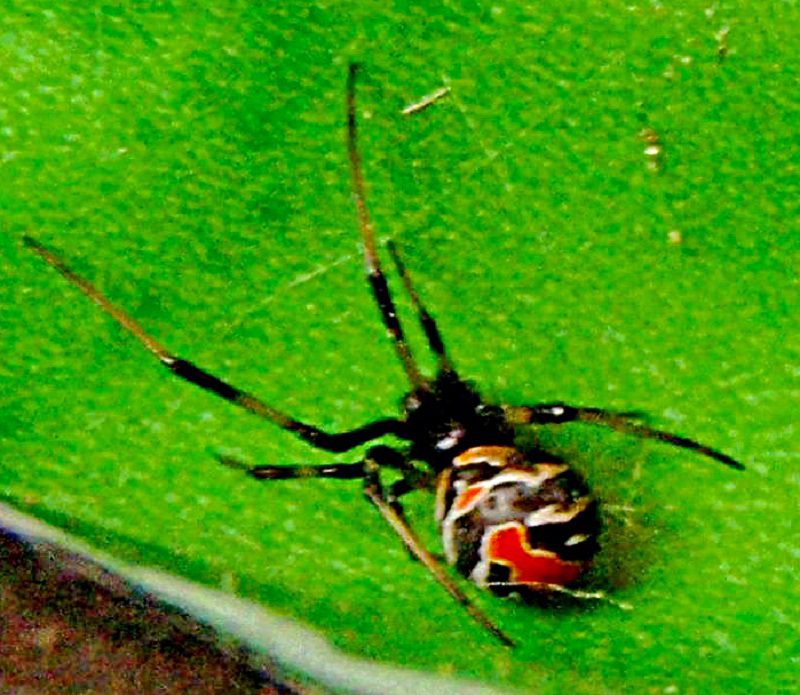
Natural pest deterrents such as companion planting may also provide an alternative way to help manage redback spider populations around residential areas in Australia.
Companion plants contain certain compounds that act as repellents against redbacks and many other types of pests; additionally, these plants can create habitats that encourage beneficial organisms like predatory insects or spiders that feed on redbacks – thus reducing their numbers naturally without introducing potentially hazardous chemicals into the environment.
When combined with regular inspections and proper sanitation techniques, companion planting can go a long way towards controlling nuisance arthropod species while minimizing human exposure risks associated with them.
Cultural Significance
The cultural significance of redback spiders in Australia is deeply embedded in the fabric of Aboriginal beliefs and customs. In Australian culture, they are often associated with spiritual symbolism and indigenous dreamtime stories. The following table provides an overview of some key points related to these associations:
| Aboriginal Beliefs | Australian Culture | Indigenous Dreamtime |
|---|---|---|
| Redbacks represent protection against evil spirits | Redbacks serve as a symbol of strength and bravery | Dreamtime stories often feature heroic characters that use magical powers to defeat redback spiders |
| They also signify courage and resilience | Redbacks were used as totems for various clans | In many cultures, spider webs are believed to be pathways between worlds |
These connections demonstrate this species’ importance in the wider context of Australian culture. Indigenous Australians have long revered redback spiders for their unique ability to survive even under harsh conditions and their role in maintaining balance in nature. Furthermore, their presence has become culturally symbolic and integral to the nation’s identity, making them iconic figures in both ancient mythology and contemporary society. This highlights why it is so important to protect these impressive creatures from any threats they may face.
Frequently Asked Questions
How Common Are Redback Spiders In Australia?
Redback spiders are amongst the most well-known species of arachnids in Australia. Their scientific name is Latrodectus hasselti, and they have a distinctive black body with a red stripe or mark on their abdomen. They can be found throughout the country, although their prevalence varies from region to region. This article will explore how common these creatures are within Australian habitats.
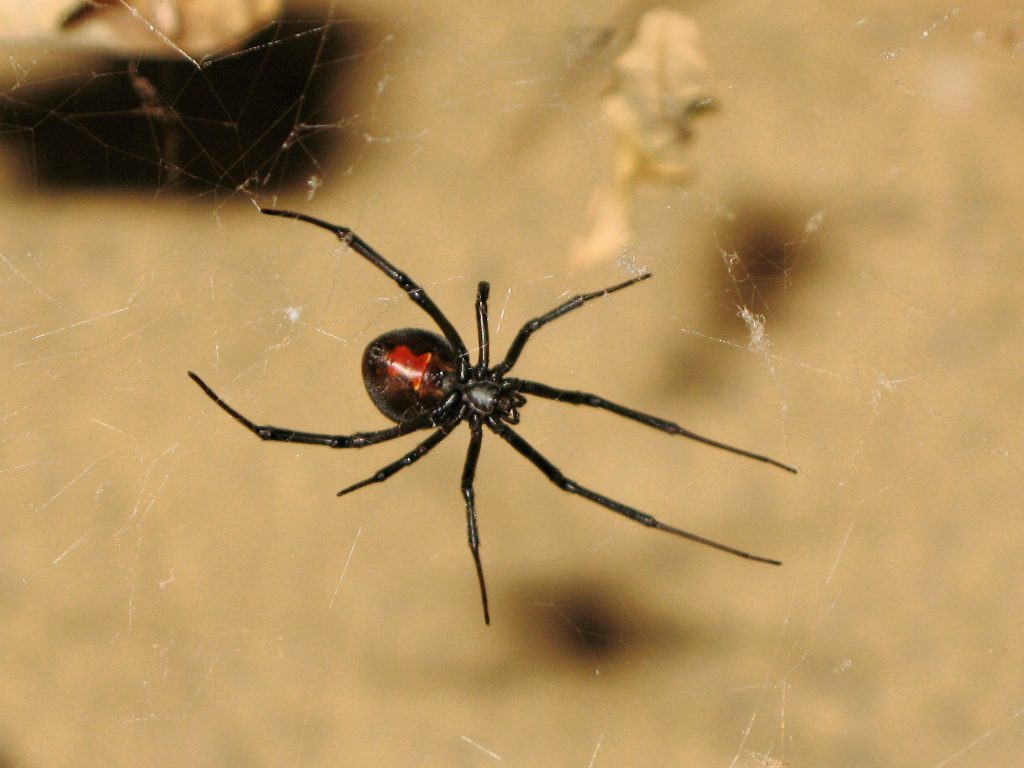
The population of Redback Spiders across Australia is estimated at between 10 million and 100 million individuals, making them one of the most numerous spider species in the country. In fact, recent studies suggest that this number may even be higher than previously thought; as many as 200 million redbacks may exist in Australia today.
Urban areas tend to have more concentrated populations due to the increased availability of food sources like insects and flies. Here are just some locations where you’re likely to find significant numbers of Redback Spiders:
- Sydney suburbs
- Melbourne metropolitan area
- Queensland rainforest
- South-Western Victoria coastal regions
In addition to having an abundance of individual specimens, Redbacks also populate many different types of habitats, such as woodlands, grasslands, shrublands and gardens. Despite being relatively widespread across the continent, there is still much unknown about their behaviour and ecology due to limited research funding allocated towards studying them. For example, we know very little about their mating habits or preferred prey items beyond what is already known through anecdotal evidence collected by local enthusiasts over time.
It would benefit future generations if more resources were available to conduct rigorous scientific investigations into this fascinating creature’s life history!
Overall, Redback Spiders can be considered a highly prevalent organism in Australia’s environment due to their wide distribution range combined with large overall numbers per location. Although further research is needed to understand better their specific behaviours within various ecological niches around the nation, it cannot be denied that they play an important role in maintaining healthy ecosystems across its diverse landscapes.
Are Redback Spiders Dangerous To Humans?
Redback spiders are a venomous spider species native to Australia and can be found in many parts of the continent. While their bite is rarely fatal, it has been known to cause serious discomfort and medical issues for those who suffer from its effects. The question remains: are redback spiders dangerous to humans?
When discussing the dangers associated with redback spiders, one must consider both the toxicity of their venom and how likely they are to attack humans. Redback spider venom is potent enough to cause nausea, vomiting, sweating, increased blood pressure, and localized pain at the site of the bite.
However, these symptoms usually resolve themselves within 24 hours without any long-term health implications. Therefore, while the human danger from redback spider bites cannot be discounted totally, it is generally considered low compared to other venomous spiders in Australia, such as funnel-web or mouse spiders.
Spider bites in Australia occur more often than most people think; however, it should not be assumed that all spider bites come from a redback spider. Other common species like huntsman or wolf spiders typically deliver far less potent and harmful envenomation when compared to a redback spider’s bite and therefore pose minimal risk to human health. Consequently, if one suspects they have been bitten by a potentially hazardous arachnid such as a redback spider, then seeking professional medical advice is highly recommended.
What Is The Best Way To Identify A Redback Spider?
Identifying redback spiders is an important skill to possess, as these creatures can become a nuisance or even dangerous when they are encountered in the outdoors. In order to properly identify a redback spider, one must be familiar with its key characteristics and traits. This article will discuss some of the most prominent features that may help in identifying this arachnid.
The most distinguishing feature of the redback spider is its glossy black body and vivid reddish-orange stripe along its back. The abdomen of a mature female redback spider is usually more rounded than that of males, making it easier for identification purposes.
Other notable features include long spinnerets at the end of their abdomens which emit silk webbing used for catching prey and wrapping eggs, strong legs designed for climbing surfaces like walls and fences, eight eyes arranged in two rows on either side of their heads, fangs located near their mouthparts capable of inflicting painful bites, and thick bristles found around the edges of their cephalothoraxes.
When attempting to identify a redback spider, individuals should take into account all these features, from colouring pattern to size ratio between male and female specimens. Furthermore, they should keep an eye out for webs constructed by these spiders, which typically appear as loose, irregularly shaped sheets with a funnel-like structure leading into them where prey gets trapped before being consumed. Knowing how to distinguish between different types of spiders accurately is essential to avoid potential risks from encountering them in nature or within our homes.
Are Redback Spiders Found In Other Countries Besides Australia?
Redback spiders are a species of spider that has been identified in numerous countries. They are typically found in Australia and New Zealand, however, they have also been documented in other areas such as Japan, South Africa, the United States, and parts of Europe. While redbacks may not be endemic to all of these places, it is clear that they can survive outside of their native habitat. In fact, some experts believe that human activity could have played a role in their spread across various regions over time.
The question remains: Are redback spiders found in other countries besides Australia? The answer appears to be yes; however, the presence and abundance of this particular species vary greatly from country to country. For example, while redbacks may occur naturally in certain European countries like France or Spain, they are much more prevalent in Australia due to its warm climate and favourable conditions for arachnids.
Furthermore, research suggests that populations of redback spiders tend to increase when humans introduce them into an area through shipping containers or other means. Therefore, it is important for people living outside of Australia to remain aware of the potential risks posed by these spiders if introduced into new habitats.
How Can I Prevent Redback Spiders From Entering My Home?
Redback spiders, native to Australia, are a species of spider that can pose health risks to humans. Prevention is key in avoiding contact with redback spiders and other dangerous arachnids. Several ways prevent these pests from entering homes and causing harm.
Firstly, keeping the home environment clean and tidy is important by eliminating clutter where possible. This includes regularly vacuuming corners, crevices, and furniture as well as removing items such as woodpiles or debris from around the outside of the house. Additionally, sealing any cracks or gaps in windows and doors will help create an impenetrable barrier for redbacks looking for a place to hide.
Secondly, using effective repellents around the home can be beneficial in deterring redbacks from entering the area. Natural repellent sprays made of essential oils like peppermint or cedarwood oil have worked effectively on various pest species, including redback spiders.
Repellents containing DEET also offer some protection against these creatures when sprayed around entry points into buildings or near known infestation sites outdoors. Finally, maintaining garden beds free from overgrowth will reduce potential hiding spots for redbacks, thus helping to limit their spread throughout residential areas.
In order to protect oneself and one’s family from potentially hazardous encounters with redback spiders, prevention methods must be employed proactively rather than reactively. Utilizing natural repellents alongside environmental control measures will provide long-term protection against this common Australian pest species, ensuring everyone stays safe and healthy in their homes!
Conclusion
Redback spiders are a common species in Australia and have been present for centuries. They are dangerous to humans, as their venomous bite can cause extreme pain and localized symptoms such as sweating, nausea, and muscle weakness. The distinctive red stripe can identify redbacks on their abdomen. While they are primarily found in Australia, there have been rare sightings of these spiders in other countries too.
In order to prevent redback spiders from entering homes, it is important to take precautionary steps such as regularly inspecting external doorways, windowsills and crevices inside buildings. Additionally, homeowners should seal any cracks or holes that could allow entry into the house or garden shed. De-cluttering outdoor spaces will also help reduce the risk of spider infestations.
It is essential to be aware of the presence of redback spiders and to understand the risks posed by them so that appropriate measures can be taken to avoid contact with them. Knowing how to identify them as well as understanding prevention methods, can help minimize potential harm caused by these arachnids within Australian households.
